Physical Address
304 North Cardinal St.
Dorchester Center, MA 02124
Physical Address
304 North Cardinal St.
Dorchester Center, MA 02124
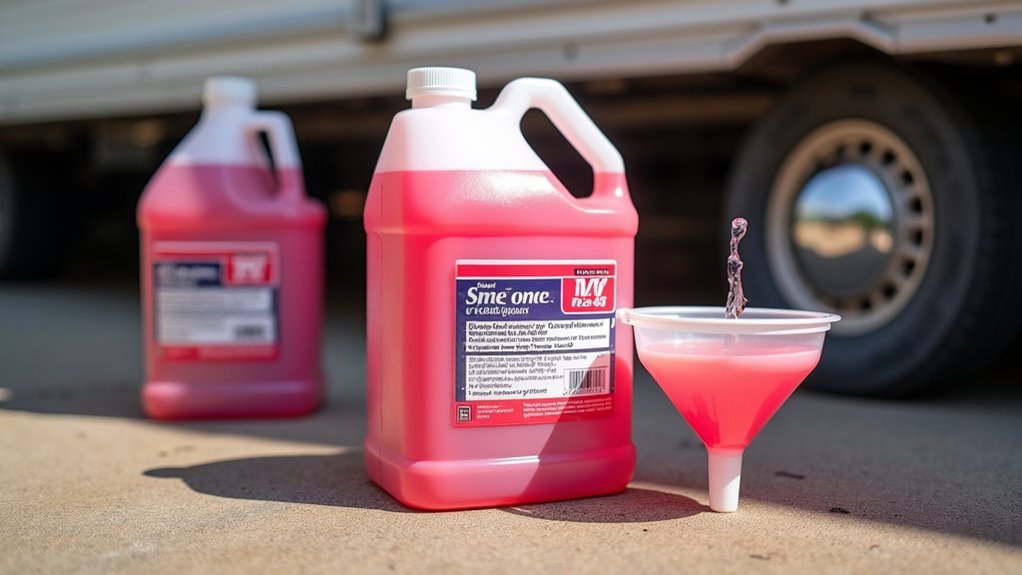
Saving money on RV antifreeze sounds tempting, but discover why this budget hack might cost you more in the long run.
Every RV owner dreams of finding that magical money-saving hack that’ll revolutionize their camping budget. When you’re looking at your winterization costs, you might wonder if reusing RV antifreeze could be your golden ticket to savings. While you can potentially recover up to 75% of antifreeze after winter use, saving $5-$20 annually, there’s more to evaluate than just the upfront cost. Let’s explore whether this penny-wise strategy might actually be pound-foolish for your RV’s health.
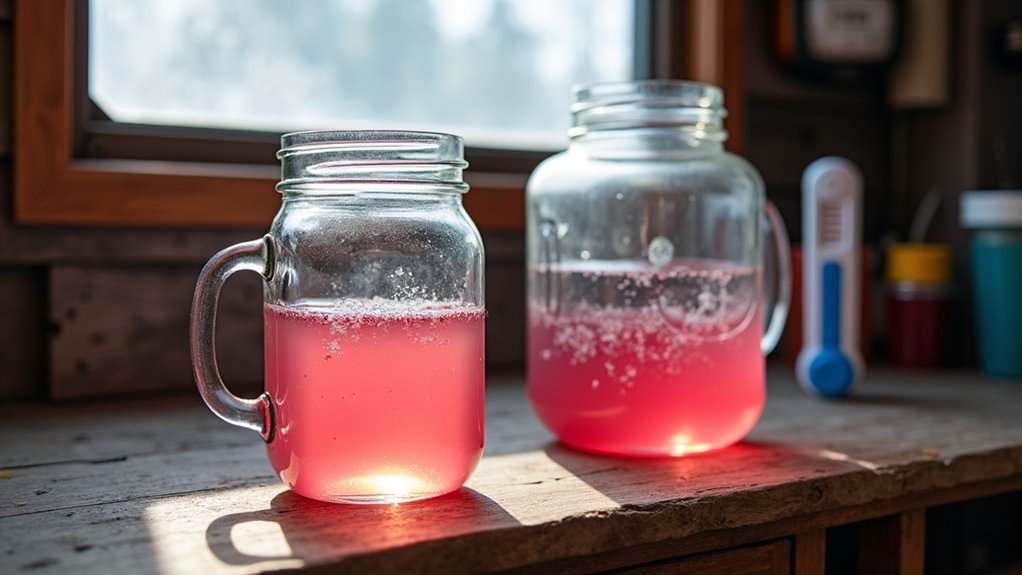
While RV antifreeze typically costs between $2.50 and $5.00 per gallon, you’ll need to take into account several factors before deciding to reuse it.
With most RVs requiring 2-4 gallons per winterizing season, your potential savings from reuse are modest – around $5 to $20 annually.
You can recover about 75% of your antifreeze after winter use, but the cost benefits mightn’t justify the effort. The presence of residual water in the system can dilute recovered antifreeze and compromise its effectiveness.
While reusing antifreeze reduces both purchase and disposal expenses, you’ll need to test its concentration levels with a refractometer to guarantee adequate protection.
Consider that buying in bulk during sales can drop prices to as low as $1 per gallon, which might be a simpler money-saving strategy than reuse.
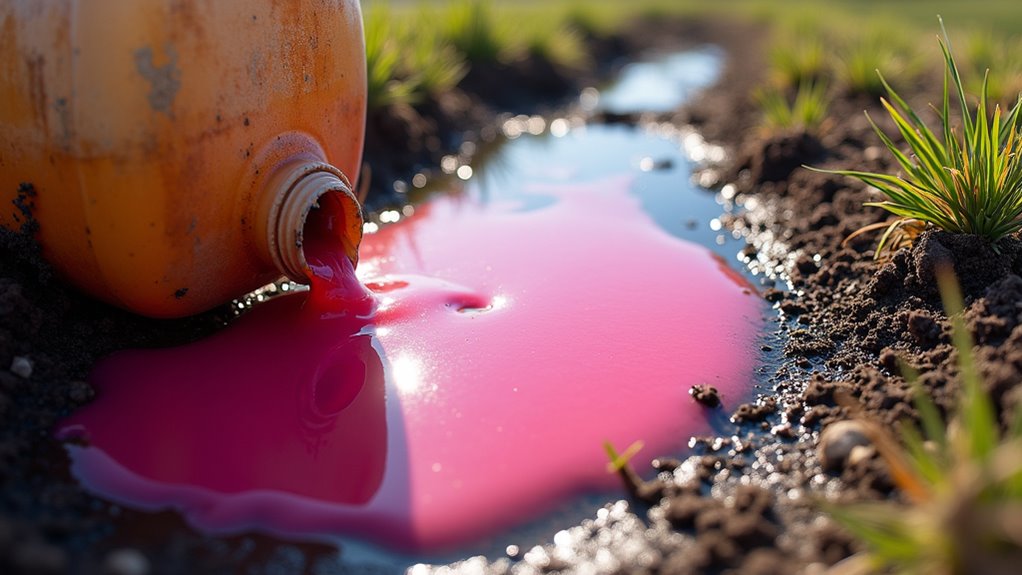
Beyond the financial considerations, you’ll need to weigh serious safety and environmental factors before reusing RV antifreeze.
While propylene glycol is FDA-approved as safe, reused antifreeze can harbor dangerous bacteria, biofilm, and contaminants that could compromise your RV’s water system and your health.
FDA approval of propylene glycol doesn’t guarantee safety when reused, as harmful bacteria and contaminants can accumulate in stored antifreeze.
Even though pink or purple colors indicate different freeze protection levels in new antifreeze, these visual indicators become unreliable in reused product.
Though reusing antifreeze might seem environmentally friendly by reducing waste, contaminated or diluted product can actually cause more harm if it leaks into soil or water sources.
The chemical stability of reused antifreeze also deteriorates over time, offering less freeze protection and potentially leading to costly repairs.
Understanding freezing points is crucial since different antifreeze formulations provide varying levels of cold weather protection.
If you’re still considering reuse, you’ll need to properly sanitize your RV’s water system and filter the antifreeze.
However, these extra steps might offset any cost savings while still leaving you with unreliable freeze protection.
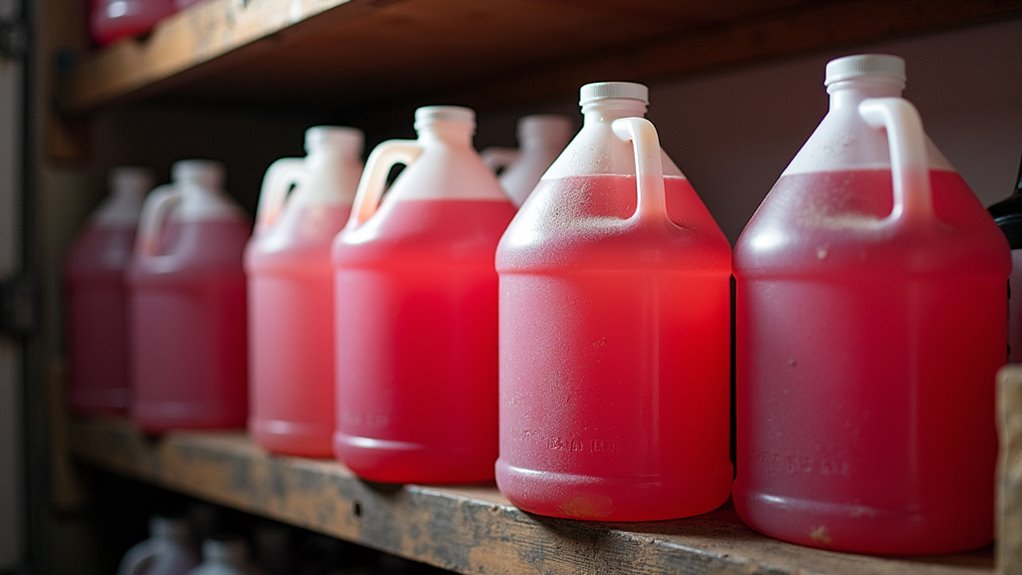
Proper storage plays an essential role in maintaining your RV antifreeze’s effectiveness and potential for reuse. Keep the product in its original container with a tight seal, storing it in a cool, dry place between 32°F and 80°F. Your indoor garage or utility closet is ideal, while outdoor sheds should be avoided.
Even with perfect storage conditions, you’ll need to respect the 1-4 year shelf life. If bubbles form when you shake the antifreeze bottle, this indicates expiration and means it’s time to replace it. Don’t try to stretch it beyond two years without testing, as expired antifreeze won’t protect your RV’s plumbing effectively.
Watch for signs of degradation like discoloration, sediment, or unusual odors. If you’re planning to reuse stored antifreeze, check for contamination and test its freezing point before application.
Remember to label containers clearly and keep them upright to prevent leaks and accidental misuse.
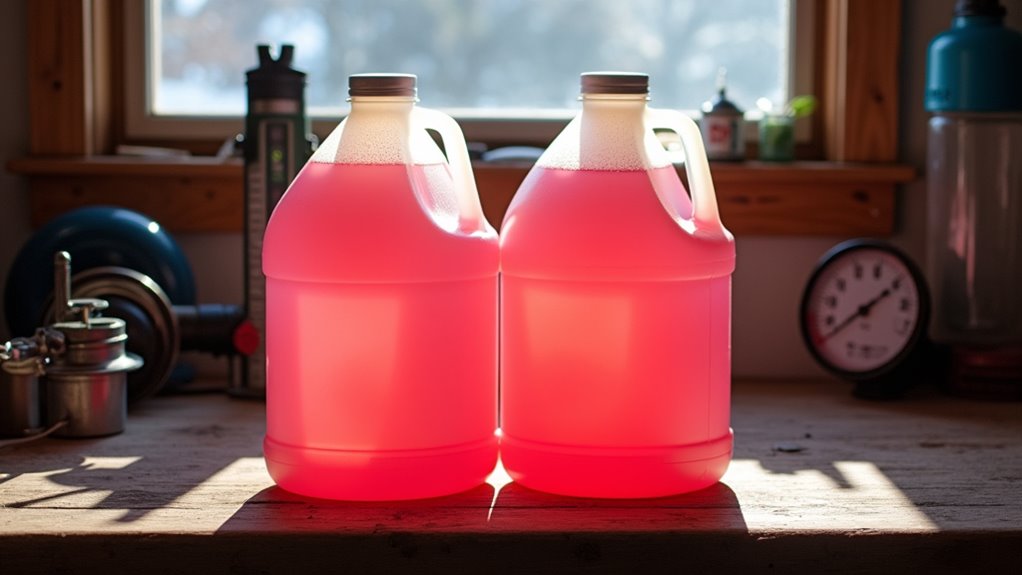
When choosing between RV winterization methods, you’ll primarily face two options: using antifreeze or compressed air.
While antifreeze offers superior protection down to -50°F and fills every part of your plumbing system, it costs about $3.50 per gallon and requires buying new product each season since reusing isn’t recommended.
Compressed air can be more cost-effective, only requiring an air compressor and minimal electricity. You won’t need to purchase gallons of antifreeze annually or worry about proper disposal.
However, this method risks leaving water in low points of your system, which could freeze and cause damage.
Using compressed air for RV winterization may miss hidden water pockets, creating potential freeze damage in your plumbing system.
Your choice should depend on your climate and risk tolerance. If you’re storing your RV in harsh winter conditions, antifreeze provides better peace of mind despite higher costs.
For milder climates, compressed air might save you money while offering adequate protection.
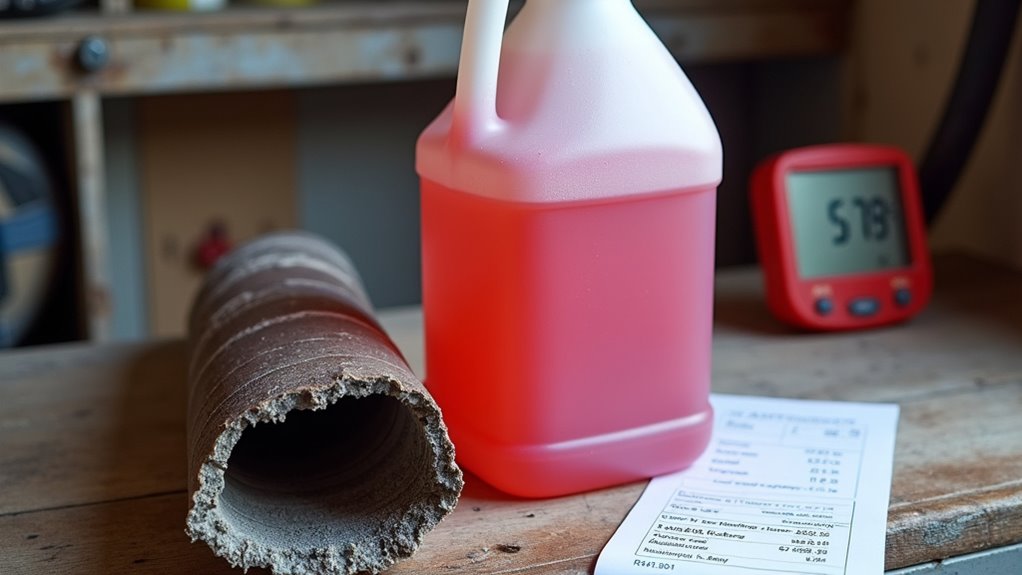
While the initial idea of reusing RV antifreeze might seem like a smart money-saving move, you’ll need to take into account several hidden expenses that could end up costing you more in the long run.
If you’re using diluted or ineffective antifreeze, you’re risking expensive repairs from frozen and burst pipes.
You’ll also need to invest time and money in testing the antifreeze’s concentration with a refractometer to verify it’s still effective.
Regular system maintenance becomes even more critical when reusing antifreeze, adding to your costs.
Don’t forget about insurance considerations – check if your policy covers damage from reused antifreeze.
You’ll still need to properly sanitize your RV’s water system after de-winterizing, and repeated exposure to even non-toxic propylene glycol can cause irritation, requiring careful handling and proper safety equipment.
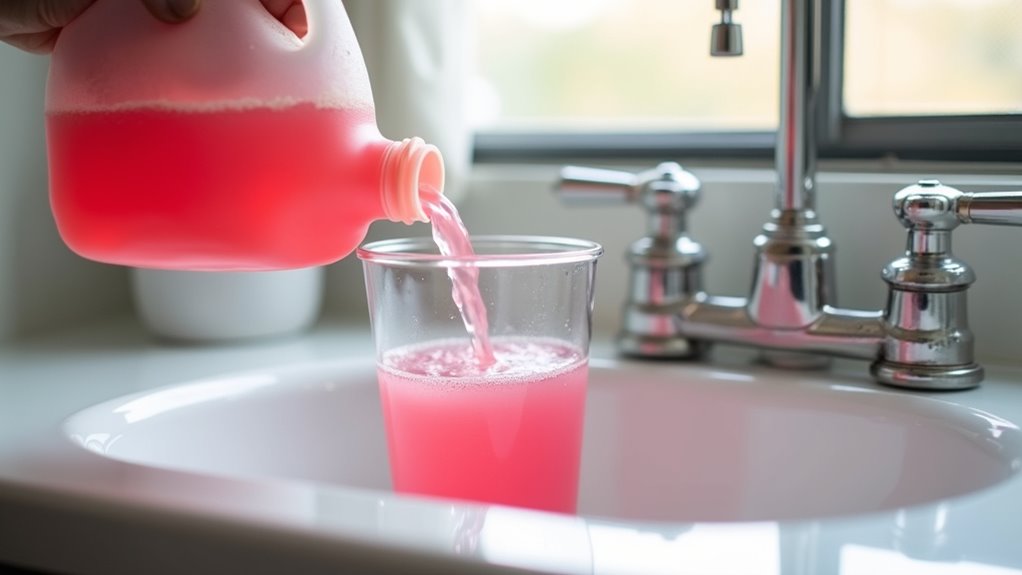
Protecting your RV during winter requires a systematic approach that’s both thorough and cost-effective.
Start by insulating all exposed pipes and completely draining your water systems before adding RV-specific antifreeze. Don’t forget to flush it through all outlets, including faucets and toilets. Use moisture absorbers throughout the interior to prevent damaging mold growth.
Seal your RV’s exterior thoroughly, paying special attention to roof seams, vents, and windows. Install proper vent covers and apply quality roof coating to prevent moisture damage.
If possible, store your RV in a covered space, or use a fitted RV cover. Add insulation to windows and doors, and consider using RV skirting to retain heat. Keep your tires properly inflated and batteries fully charged.
Remember to remove all food items and use pest deterrents to protect against unwanted visitors during storage.
Just like you wouldn’t reuse old engine oil to save a few bucks, reusing RV antifreeze isn’t worth the risk. While you might save $5-$20 annually, you’re gambling with your RV’s plumbing system. Think of it as insurance – fresh antifreeze is your protection against costly repairs. Instead of cutting corners here, look for savings in other areas of RV maintenance where the stakes aren’t as high.